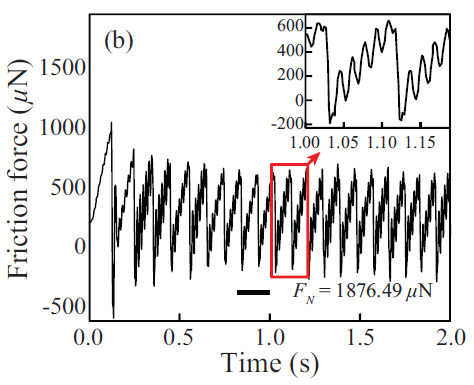We usually think of hydrogels as slippery and wet — that’s their definition! But if a probe pushes on them to a higher pressure before applying lateral slip, that high pressure causes unstable friction, or stick-slip (just like the elastomer in our prior post!). So even inherently low-friction materials relieve interfacial strain in extreme ways. In this case we worked with Karin Dahmen in Physics here at Illinois to analyze the unstable friction data as though it obeys the same energy-dissipation models as earthquakes and internal slip events inside materials. It does! If all of the small force drops are considered alongside the time it takes for each force drop, we find that the distribution matches those found in other types of slip. What other types of slip avalanches should we make in the lab? Let me know at acd@illinois.edu or on Twitter @tribo_tweets

